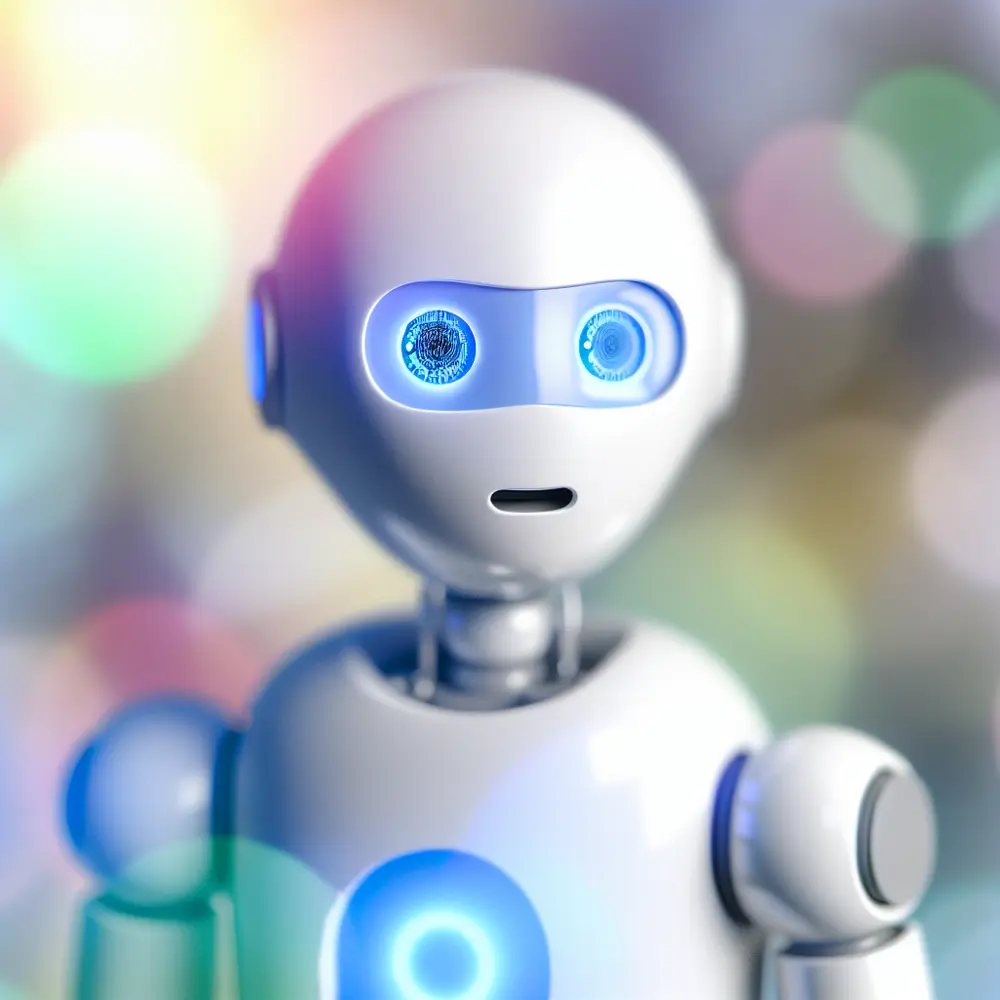In today’s rapidly evolving digital landscape, the integration of technology into business operations has become indispensable. Among the various automation solutions available, chatbots stand out as powerful tools that can revolutionize customer interactions. By leveraging advanced AI technologies, these digital assistants are redefining how businesses communicate with their clients, ultimately enhancing engagement and streamlining operations. But what exactly makes chatbots so vital for modern enterprises?
As you read through this article, you will discover the critical role chatbots play in the realm of automation, the underlying technologies that power them, and the different types of chatbots available for deployment. Furthermore, we will delve into best practices for integrating these solutions effectively and showcase real-world case studies that exemplify their benefits. Finally, we will explore the exciting future of chatbot development and the endless possibilities it holds for businesses across various industries.
So, whether you’re a developer, an IT professional, or a business leader, this comprehensive breakdown of chatbots will arm you with essential knowledge to harness their capabilities. Get ready to unlock the potential of chatbots and transform your customer service and operational strategies!
The Role of Chatbots in Automation
Chatbots play a pivotal role in the realm of automation, serving as the first point of contact for customer interactions and streamlining numerous processes across various industries. These AI-driven solutions are designed to simulate human conversation, providing users with immediate responses and assistance. By leveraging advanced techniques such as natural language processing (NLP) and machine learning, chatbots can understand and respond to user inquiries effectively, making them an essential tool for developers and IT professionals aiming to enhance customer engagement and operational efficiency.
As businesses increasingly adopt digital transformation strategies, the implementation of chatbots has become more prevalent. They are capable of handling a wide array of tasks, from answering frequently asked questions to facilitating bookings and transactions. This functionality not only reduces the workload on human agents but also ensures that customers receive quick and accurate information, leading to heightened satisfaction levels. Additionally, chatbots can interact with users 24/7, offering assistance outside regular business hours, which is particularly advantageous for global organizations catering to diverse time zones.
Moreover, the integration of chatbots with other AI solutions, such as CRM systems and analytics tools, allows companies to gain deeper insights into customer behaviors and preferences. By analyzing conversation data, businesses can refine their strategies and tailor their offerings to better meet the needs of their target audience. This data-driven approach not only helps in personalizing customer experiences but also aids in identifying trends that can inform product development and marketing efforts.
In summary, the significance of chatbots in automation cannot be overstated. They are more than just tools; they are strategic allies for companies seeking to enhance efficiency and improve customer service. For developers and IT professionals, understanding the intricacies of chatbot technology and its applications is crucial for leveraging its full potential, paving the way for innovative solutions that can transform business operations in an increasingly digital landscape.
The Technology Behind Chatbots
Chatbots are revolutionizing the way businesses interact with customers, and understanding the technology behind them is essential for developers, IT professionals, and companies looking to integrate automation into their operations. At the core of this technological advancement are various artificial intelligence (AI) solutions that empower chatbots to deliver seamless, human-like interactions. Natural Language Processing (NLP), Machine Learning (ML), and deep learning are among the key components that drive the functionality of chatbots.
Natural Language Processing enables chatbots to comprehend and generate human language. By utilizing NLP algorithms, chatbots can interpret user queries, sentiment, and intent, making conversations feel more natural. This technology allows chatbots to dissect sentences and understand context, leading to more accurate responses. For instance, with advancements in NLP, chatbots can recognize colloquial expressions, varied dialects, and even sarcasm, which enhances their usability and effectiveness in real-world scenarios.
Machine Learning plays a pivotal role in improving chatbot performance over time. By analyzing past interactions, chatbots can identify patterns and refine their response strategies. Developers can incorporate supervised learning where chatbots are trained on labeled datasets or unsupervised learning that allows them to recognize patterns in data without explicit instructions. This continual learning process not only boosts the accuracy of responses but also enables chatbots to adapt to evolving user preferences and behaviors, providing a more personalized experience.
Deep learning further enhances the capabilities of chatbots by employing neural networks that mimic the human brain’s functioning. This allows chatbots to perform more complex tasks, such as image recognition and voice processing, alongside text-based conversations. The integration of deep learning creates a more sophisticated system capable of multi-modal interactions, where users can communicate through text, voice, or even visual inputs, broadening the scope of chatbot applications.
Types of Chatbots
When it comes to chatbots, understanding the different types available is crucial to selecting the right solution for your specific needs. Broadly, chatbots can be categorized into two main types: rule-based chatbots and AI-powered chatbots. Rule-based chatbots operate on predefined responses and script-based interactions. They follow a set of if-then rules to guide users through the conversation and can efficiently handle basic inquiries, often found in FAQs and straightforward customer service scenarios. However, their limitations become apparent in more complex interactions where user intent cannot be easily determined.
In contrast, AI-powered chatbots utilize machine learning and natural language processing (NLP), allowing them to understand and respond to user queries with greater sophistication. These chatbots can learn from interaction history and improve their responses over time. This adaptability makes them suitable for handling more nuanced conversations, providing tailored responses that enhance user experience significantly. Developers and IT professionals often gravitate towards implementing AI solutions to ensure efficiency and a more human-like interaction with customers.
When evaluating which type of chatbot to implement, consider the complexity of interactions your business anticipates. If your needs are primarily centered around basic inquiries, a rule-based chatbot might suffice. However, for businesses requiring more robust customer engagement, an AI-powered chatbot is more effective, handling varying languages, tones, and intents with ease. The right choice will depend on your specific operational goals and the level of interaction you wish to provide.
Furthermore, the integration capabilities of chatbots should not be overlooked. Businesses should choose a solution that seamlessly connects with existing systems and workflows, whether it’s for customer relationship management (CRM), e-commerce platforms, or other backend services. This level of integration enhances data flow and enables chatbots to provide real-time information, ultimately redefining customer interaction strategies and boosting overall efficiency. Therefore, thorough assessment and strategic planning are imperative to ensure the chosen chatbot aligns with organizational objectives and enhances the user experience effectively.
Best Practices for Integrating Chatbots
Integrating chatbots into your business can streamline operations, improve customer service, and boost efficiency. To achieve optimal results, it’s essential to follow best practices that address both user needs and technological capabilities. The first step in effective chatbot integration is to define clear objectives and the specific use cases for your AI solutions. Whether it’s handling FAQs, facilitating bookings, or conducting surveys, pinpoint the areas where chatbots can add the most value. Understanding your audience demographic also informs the design and functionality, ensuring the chatbot provides relevant and engaging interactions.
Next, choose the right platform and technology stack that aligns with your business requirements. Evaluate various chatbot development frameworks and determine if you want to build a custom solution or leverage existing AI tools. Well-established platforms often offer robust APIs, ease of integration, and scalability while allowing for a high degree of customization. This consideration can drive the decision-making process, as a solid foundation is imperative for future expansions and modifications.
Incorporating user feedback throughout the development process is another vital best practice. Engage with end-users early on through prototypes and beta testing phases to gather insights into their interaction preferences. This will not only enhance user experience but also help in identifying potential issues before full deployment. Continuous iteration based on this feedback ensures that the chatbot evolves alongside customer expectations and remains valuable over time.
Finally, prioritize security and compliance when integrating chatbots. With handling personal data and sensitive information, it’s crucial to implement robust security protocols and adhere to regulatory standards. Educating users about privacy policies and integrating secure data handling practices fosters trust and security. By following these best practices, businesses can seamlessly integrate chatbots into their operations, ultimately reaping the benefits of enhanced automation and improved customer interactions.
Case Studies of Successful Chatbot Implementations
Case studies showcasing successful implementations of chatbots illustrate the transformative potential of AI solutions across various industries. By automating customer interactions, these chatbots not only improve service efficiency but also enhance user experiences significantly. For instance, a global e-commerce platform utilized a chatbot for handling customer inquiries 24/7, resulting in a staggering 30% reduction in response times and a 25% increase in customer satisfaction ratings. This implementation highlighted the chatbot’s capability to manage large volumes of requests simultaneously without compromising quality.
In the healthcare sector, a leading hospital integrated a chatbot into its appointment scheduling system. Patients were able to book, reschedule, or cancel appointments using simple text commands. This not only streamlined the booking process but also minimized the administrative burden on staff. Post-implementation analyses showed that the chatbot reduced appointment scheduling errors by 40% and improved patient engagement through timely reminders and follow-ups, facilitating a more organized healthcare experience.
Another compelling example can be seen in the banking industry, where a prominent bank launched a chatbot to assist customers with routine queries related to account balances, recent transactions, and loan applications. By leveraging natural language processing, the chatbot understood customer inquiries effectively and delivered accurate responses. This initiative led to a remarkable increase in online service usage by 50%, as customers found the chatbot an easy and efficient way to manage their banking needs. Moreover, the bank experienced a notable decrease in call center workloads, allowing human agents to focus on more complex customer issues.
These case studies underscore the versatility and effectiveness of chatbots as AI solutions in various domains. They show how businesses can leverage this technology not just for cost savings but also to create proactive, responsive service environments. The success of chatbot implementations hinges on their design and integration into existing systems, proving that when executed thoughtfully, chatbots can drive tangible results in customer satisfaction and operational efficiency.
The Future of Chatbot Development
The future of chatbot development is set to revolutionize the way businesses interact with customers, driven by advancements in AI solutions. As technology continues to evolve, chatbots are becoming increasingly sophisticated, offering enhanced capabilities that go beyond simple customer service interactions. One significant trend is the integration of natural language processing (NLP) and machine learning, which enables chatbots to understand and respond to user queries more effectively and naturally. This shift allows for more engaging and meaningful conversations, thereby improving user satisfaction and retention.
Another emerging trend is the customization and personalizability of chatbots. Businesses are beginning to recognize the importance of tailoring interactions to meet individual customer needs. The incorporation of user data and behavioral insights allows chatbots to deliver personalized recommendations and responses, increasing the likelihood of successful conversions. Developers will need to focus on creating scalable frameworks that can easily adapt to evolving customer preferences while maintaining operational efficiency.
Moreover, the rise of voice-activated technology is reshaping chatbot interfaces. As smart speakers and voice recognition systems gain popularity, businesses will increasingly develop chatbots that can comprehend and respond to voice commands. This evolution aims to create more intuitive user experiences across various platforms, making interactions with chatbots as seamless as possible. Developers will need to ensure compatibility with voice recognition technologies and focus on enhancing the conversational capabilities of their chatbots in this new medium.
Finally, alongside these technological advancements, ethical considerations regarding data privacy and security will play a crucial role in the future of chatbots. As AI solutions gather more personal information to enhance user experiences, developers must prioritize creating secure systems that protect user data. Transparency in how data is used and ensuring compliance with regulations will be imperative for building trust with consumers. By addressing these ethical challenges, companies can leverage the full potential of chatbots while fostering a responsible framework for AI deployment in their operations.
Conclusion: The Benefits of Chatbots
Embracing chatbots in today’s business landscape offers a myriad of benefits that can significantly enhance operational efficiency, customer engagement, and overall productivity. By leveraging AI solutions, companies can automate routine tasks and streamline processes, allowing human resources to focus on more complex and strategic activities. This shift not only improves response times but also increases the accuracy of information relayed to customers. With chatbots handling inquiries round-the-clock, businesses can ensure that customer needs are addressed promptly, thereby boosting satisfaction levels and fostering loyalty.
Moreover, chatbots facilitate the collection of valuable data, enabling companies to analyze customer interactions and preferences. This information is crucial for tailoring services and marketing efforts, providing insights that drive decision-making and enhance business strategies. Companies that adopt chatbots can quickly respond to market trends, as these systems allow for rapid implementation of changes based on customer feedback and behavior patterns, ensuring that businesses remain agile in a fast-paced environment.
Integrating chatbots also leads to cost savings over the long term. By reducing the need for a large customer service team, businesses can allocate resources more effectively. The automation of repetitive tasks translates to lower operational costs while simultaneously maintaining high levels of service. As chatbots become more advanced, they can handle increasingly complex queries, further diminishing reliance on human agents and enhancing the scalability of operations.
Finally, the adoption of chatbots is a stepping stone towards digital transformation. As businesses increasingly seek innovative solutions to stay competitive, implementing AI-driven chatbots signifies a commitment to modern technology and forward-thinking strategies. Organizations that embrace this technology position themselves as leaders in their industries, ready to harness the full potential of automation. In conclusion, the integration of chatbots into business processes not only offers immediate operational advantages but also paves the way for future advancements and sustainability in an ever-evolving market. For a deeper exploration of chatbot capabilities, consider how a CRM for WhatsApp can enhance your business operations further!









